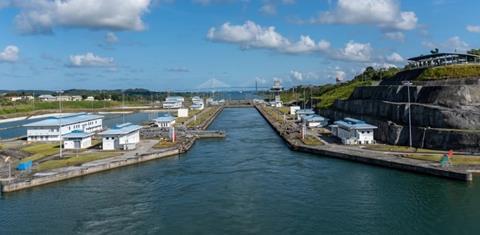Low water levels in the Panama Canal are wreaking havoc for the maritime supply chain. A delay to the start of the Panamanian rainy season has significantly decreased the levels of freshwater in the canal’s reservoirs and the Panama Canal Authority is undertaking water-saving measures to allow maritime trade to continue, while supplying water and hydroelectric power to the country.

In mid-October, the canal’s draught was set to 13.4 m, with 30-32 vessels granted transit per day. In November, that figure was cut to 22, and the number is expected to be slashed to 18 in February 2024. Crossing slots are being auctioned and at the time of publication, an LPG carrier reportedly bid USD4 million (on top of the normal toll) to get to the front of the line, which currently stands at around 100 vessels. The situation is side-lining smaller ships and could have negative inflationary effects on local economies.
According to the Panama Canal Authority’s website, October has been “the driest since the earliest registers, 73 years ago. The drought caused by the El Niño phenomenon continues to impact the Panama Canal’s reservoir system and, as a result, water availability has been reduced.” Multipurpose carrier BBC Chartering issued a circular to its customers on November 15 stating that whilst the situation continues to worsen, waiting times for non-booked ships to pass the Panama Canal has reached 16 days for its size of vessels.
It added that attempts to secure further passages for its vessels have, so far, been unsuccessful. “Auctions for passages for our usual vessel sizes have been suspended, at least until the end of this month. It is thus inevitable that waiting times increase further. We are currently investigating the options of routing via the Cape of Good Hope or via the Suez Canal for current voyages affected. Waiting times and re-routing will be handled in accordance with the carrier’s Canals and Waterways Clause,” said BBC Chartering.
















